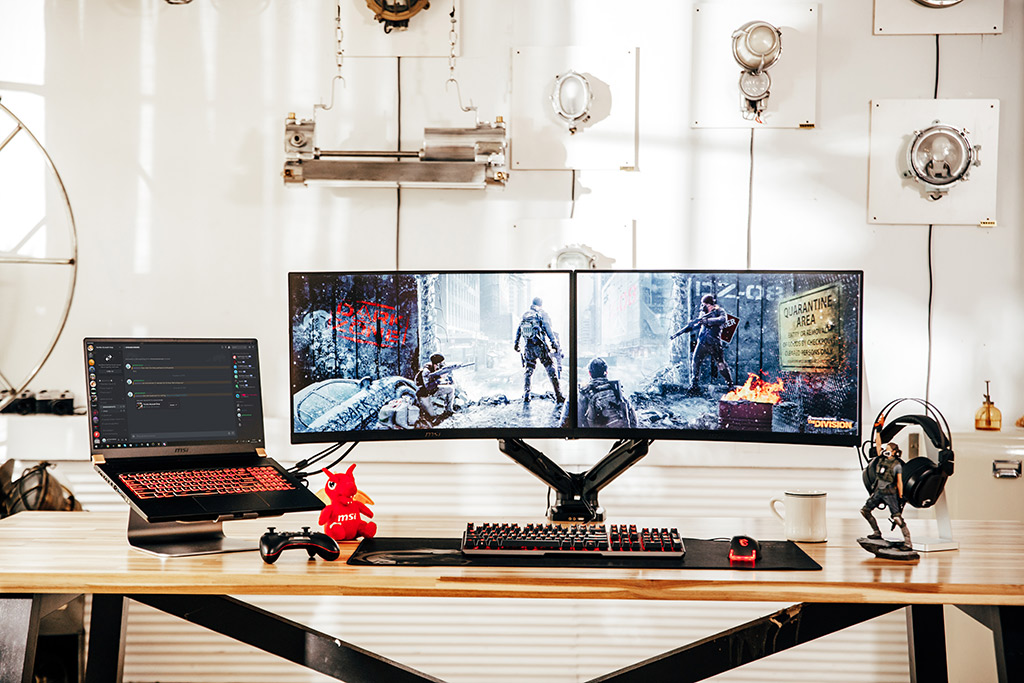How to Set Up a Multi-Monitor PC Gaming Station
The modern gaming experience is no longer confined to a single screen. Multi-monitor setups have become a staple for serious gamers, offering unparalleled immersion, enhanced multitasking, and a competitive edge in fast-paced titles. However, setting up a multi-monitor PC gaming station requires careful planning, the right hardware, and an understanding of how to optimize the configuration for performance.
This article walks you through creating the ultimate multi-monitor setup, from choosing the right displays to configuring your software for the best gaming experience.
Choosing the Right Monitors for Gaming
Selecting the right monitors is the cornerstone of building a multi-screen gaming station. Here are some key factors to consider:
Larger monitors with higher resolutions, such as 1440p or 4K, provide better visuals but demand more powerful hardware. Ensure the screens are the same size and resolution to maintain a seamless display across all monitors.
Gamers should prioritize monitors with a refresh rate of at least 144Hz for smoother motion, especially in competitive games.
IPS panels offer vibrant colors and wide viewing angles, making them ideal for multi-monitor setups. Alternatively, TN panels are a cost-effective option for higher refresh rates, though color accuracy may suffer.
Thin-bezel monitors minimize distractions and create a more cohesive display. This is particularly important when aligning multiple monitors side by side.
Recommended Monitors for Multi-Screen Gaming
- ASUS ROG Swift PG279Q (27-inch, 1440p, 165Hz)
- Dell Alienware AW3423DW (34-inch ultrawide, QD-OLED, 175Hz)
- LG UltraGear 27GP950-B (4K, 144Hz, HDMI 2.1)
Optimizing Your Hardware Setup
A robust multi-monitor setup demands powerful hardware to handle the increased graphical load. Here’s what you’ll need to ensure smooth performance:
Look for GPUs with multiple display outputs and sufficient power for high-resolution gaming. The NVIDIA RTX 40 series or AMD Radeon RX 7000 series are excellent options for supporting multi-monitor configurations.
Ensure compatibility between your monitors and GPU by selecting the right cables (HDMI, DisplayPort, or USB-C). DisplayPort is the preferred choice for high refresh rates and resolutions.
Invest in a sturdy desk with enough space for all monitors. Adjustable monitor arms or VESA mounts can help save space and provide ergonomic positioning.
High-performance GPUs and multiple monitors demand more power. A reliable PSU with adequate wattage ensures stable operation.
Key Accessories to Enhance Your Setup
- Monitor stands or arms for precise positioning.
- Cable management tools to reduce clutter.
- RGB lighting for an immersive ambiance.
Configuring Software for Multi-Monitor Gaming
After assembling your hardware, the next step is software configuration. This ensures a seamless gaming experience and efficient multitasking:
Access the Display Settings panel to arrange monitors in the correct order. Ensure the primary display is set as the center monitor for gaming.
These tools allow you to stretch your game across multiple monitors, creating a panoramic view. Adjust bezel correction settings to avoid misaligned visuals.
Not all games support multi-monitor setups natively. Research mods or third-party software that optimize specific titles for multiple screens.
Use software like DisplayCal or built-in monitor tools to match color profiles and brightness levels across all screens.
Troubleshooting Common Issues
- Resolution Mismatch: Check monitor settings and GPU drivers to ensure resolutions match.
- Game Crashes or Performance Drops: Lower in-game settings, update GPU drivers, or upgrade RAM to handle resource-intensive games.
- Black Bars or Misaligned Images: Adjust aspect ratios and bezel correction in your GPU's software suite.
Enhancing the Gaming Experience
Once your multi-monitor PC gaming station is up and running, focus on optimizing the overall experience:
- Peripheral Integration: Complement your setup with high-quality peripherals like mechanical keyboards, gaming mice, and surround sound headphones.
- Ambient Lighting: Sync RGB lighting with your games for an immersive atmosphere. Products like Philips Hue or Corsair iCUE can elevate your setup’s aesthetic appeal.
- Streaming and Productivity: Use extra monitors for tasks like monitoring chats, running music software, or managing game overlays if you're into content creation.
Maintenance Tips
- Regularly clean your monitors and desk to maintain a professional look.
- Keep drivers and firmware updated for optimal performance.
- Monitor system temperatures and ensure proper airflow to prevent overheating.
Conclusion
Setting up a multi-monitor PC gaming station requires meticulous planning and attention to detail. By choosing the right monitors, optimizing hardware, configuring software, and enhancing your environment, you can create a gaming station that offers immersive visuals and unmatched functionality. With this guide, you're well on your way to elevating your gaming experience to professional levels.
Sources
- ASUS ROG Swift PG279Q - Specifications
- Dell Alienware AW3423DW - Product Page
- LG UltraGear 27GP950-B - Features
- NVIDIA RTX 40 Series - Overview
- AMD Radeon RX 7000 Series - Details
- Windows Multi-Monitor Setup Guide
- NVIDIA Surround Configuration Tips
- AMD Eyefinity Setup Guide
- DisplayCal - Monitor Calibration Software
- Corsair iCUE - Lighting Integration
































































